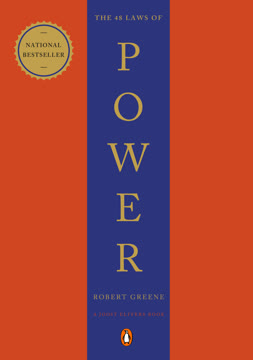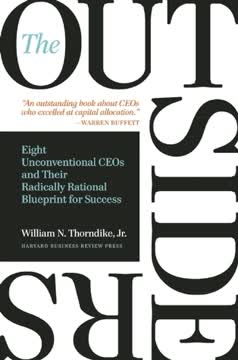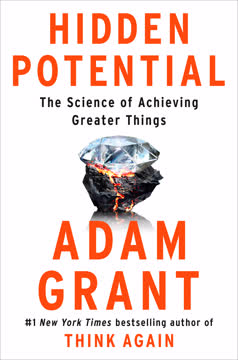Points clés
1. L’élégance s’obtient par soustraction, non par addition
« La perfection n’est pas atteinte lorsqu’il n’y a plus rien à ajouter, mais lorsqu’il n’y a plus rien à retirer. »
La puissance du moins. L’élégance naît lorsque l’on élimine le superflu pour révéler l’essentiel. Ce principe s’applique dans de nombreux domaines, de l’art et du design à l’entreprise et à la technologie. En supprimant les éléments inutiles, on crée de la clarté, de la concentration et de l’impact.
Exemples d’élégance par soustraction :
- Le succès d’In-N-Out Burger grâce à un menu restreint
- Les designs minimalistes des produits Apple
- La méthode d’entraînement de Chris Carmichael pour Lance Armstrong
Le défi réside dans notre tendance naturelle à ajouter plutôt qu’à soustraire. Surmonter ce biais demande un effort conscient et la volonté de remettre en question ce qui est vraiment nécessaire.
2. La symétrie crée ordre et engagement dans les systèmes complexes
« Trente rayons partagent le moyeu de la roue, c’est le trou central qui la rend utile. »
Des motifs dans le chaos. La symétrie offre un cadre pour comprendre et organiser des systèmes apparemment chaotiques. Elle nous permet de trouver beauté et sens dans la complexité, que ce soit dans la nature, l’art ou les systèmes conçus par l’homme.
Applications de la symétrie :
- Les motifs fractals dans les peintures de Jackson Pollock
- Les aménagements d’espaces partagés en gestion du trafic
- La structure des équations mathématiques élégantes
En reconnaissant et en exploitant la symétrie, nous pouvons créer des solutions plus engageantes et efficaces, qui résonnent avec notre appréciation innée de l’ordre et de l’équilibre.
3. La séduction naît de l’ambiguïté et du pouvoir de la suggestion
« Léonard de Vinci a inventé la technique appelée sfumato — littéralement “à la manière de la fumée” — qu’il définissait vaguement comme “sans bords ni lignes distincts”. »
Le charme du mystère. L’ambiguïté et l’incomplétude stimulent notre imagination, nous attirent et nous poussent à combler les vides. Ce principe peut être utilisé stratégiquement pour créer des expériences et des idées plus captivantes.
Ambiguïté séduisante en action :
- Le sourire énigmatique de la Joconde
- La fin ouverte de la série Les Soprano
- Le marketing minimaliste d’Apple lors du lancement de l’iPhone
En laissant place à l’imagination, on crée une expérience plus active et mémorable pour le public, favorisant un engagement plus profond et une connexion émotionnelle.
4. La durabilité exige d’innover avec des ressources limitées
« La durabilité repose sur la capacité à voir les ressources finies comme la source même de l’innovation. »
Les contraintes engendrent la créativité. Considérer les limites comme des opportunités plutôt que des obstacles conduit à des solutions ingénieuses et durables. Cet état d’esprit est essentiel dans un monde où les ressources se raréfient.
Innovations durables nées des contraintes :
- Le refroidisseur désertique pot dans pot de Mohammed Bah Abba
- Le modèle bancaire sans agences de first direct
- Le développement de la voiture hybride Prius par Toyota
En acceptant les contraintes, nous nous forçons à penser plus créativement et trouvons souvent des solutions à la fois plus durables, élégantes et efficaces.
5. L’observation est la clé pour débloquer des solutions élégantes
« Si nous observions d’abord, concevions ensuite, nous n’aurions pas besoin de la plupart des choses que nous construisons. »
Le pouvoir du regard. Une observation profonde et patiente nous permet de comprendre la véritable nature des problèmes et d’identifier des solutions élégantes souvent ignorées. Cette approche exige de suspendre nos hypothèses et nos préjugés.
Percées issues de l’observation :
- La stratégie policière des « fenêtres brisées » de William Bratton
- Le principe genchi genbutsu (« aller voir par soi-même ») de Toyota
- La découverte des fractales dans les peintures de Pollock par Richard Taylor
Cultiver l’art de l’observation aiguë peut conduire à des révélations qui transforment notre compréhension des problèmes et ouvrent la voie à des solutions élégantes.
6. Les pauses mentales et le calme favorisent les éclairs de créativité
« De nouvelles études montrent que les révélations créatives surviennent souvent lorsque l’esprit est occupé à une activité sans lien avec le problème en question. »
La valeur du temps de repos. Paradoxalement, s’éloigner d’un problème et laisser l’esprit se reposer peut souvent engendrer des idées révolutionnaires. Ce principe remet en cause notre culture de la productivité constante.
Stratégies pour l’incubation mentale :
- Le sommeil et les siestes courtes
- La méditation et la pleine conscience
- La pratique d’activités ou de loisirs sans rapport
En intégrant volontairement des périodes de repos mental et de détachement, nous laissons notre subconscient travailler sur les problèmes et générer des solutions créatives.
7. L’élégance équilibre simplicité et puissance surprenante
« Tout ce qui est élégant est simple, mais tout ce qui est simple n’est pas élégant. »
Simplicité avec profondeur. La véritable élégance dépasse la simple simplicité pour atteindre un équilibre entre clarté et impact. Elle résout des problèmes complexes par des solutions qui paraissent trompeusement simples, mais d’une efficacité étonnante.
Caractéristiques des solutions élégantes :
- Symétrie dans la forme et la fonction
- Engagement séduisant du public
- Usage durable des ressources
- Fondées sur une observation approfondie
- Souvent issues de moments d’intuition
Atteindre l’élégance demande une approche globale qui intègre tous ces éléments, aboutissant à des solutions à la fois efficaces, esthétiques et émotionnellement puissantes.
Dernière mise à jour:
FAQ
1. What is "In Pursuit of Elegance" by Matthew E. May about?
- Core Premise: The book explores the concept of elegance, defined as achieving maximum impact with minimum input, and how the best ideas often have something intentionally missing.
- Central Argument: May argues that what isn’t there can often be more powerful than what is, and that subtraction, ambiguity, and simplicity can lead to more innovative and effective solutions.
- Range of Examples: The book draws on stories from business, art, science, design, and daily life to illustrate how elegance works in practice.
- Practical Application: It provides a framework for readers to apply the principles of elegance to their own work, problem-solving, and creative processes.
2. Why should I read "In Pursuit of Elegance" by Matthew E. May?
- Fresh Perspective: The book challenges conventional wisdom that more is always better, offering a counterintuitive approach to creativity and problem-solving.
- Broad Relevance: Its principles apply to a wide range of fields, including business, design, science, and personal development.
- Actionable Insights: Readers gain practical strategies for achieving more with less, making their ideas, products, and lives more impactful and sustainable.
- Engaging Stories: The book is filled with memorable real-world examples, from The Sopranos finale to the design of the iPhone, making the concepts accessible and compelling.
3. What are the key takeaways from "In Pursuit of Elegance" by Matthew E. May?
- Elegance Defined: Elegance is about achieving surprising power and uncommon simplicity, often by intentionally leaving something out.
- Four Elements of Elegance: The key elements are symmetry, seduction, subtraction, and sustainability.
- Subtraction Over Addition: Removing the right things can create more value than adding more features, information, or complexity.
- Engagement Through Ambiguity: Leaving gaps or open-endedness can engage others’ imagination and participation, leading to deeper involvement and satisfaction.
4. How does Matthew E. May define "elegance" in "In Pursuit of Elegance"?
- Maximum Impact, Minimum Input: Elegance is the art of achieving the greatest effect with the least effort or material.
- Not Just Simplicity: Elegance is more than just simplicity; it’s about thoughtful reduction that enhances power and resonance.
- Involvement of the Observer: True elegance often invites the audience or user to fill in the gaps, making the experience more memorable and engaging.
- Balance of Elements: Elegance is achieved when symmetry, seduction, subtraction, and sustainability are all present and balanced.
5. What are the four key elements of elegance according to "In Pursuit of Elegance"?
- Symmetry: Provides structure, order, and beauty, helping us solve problems with partial information and recognize patterns.
- Seduction: Engages curiosity and imagination by leaving something to the observer’s interpretation, creating intrigue and involvement.
- Subtraction: Focuses on removing the unnecessary, reducing complexity, and achieving more by doing less.
- Sustainability: Ensures that elegant solutions are repeatable, lasting, and make the best use of limited resources.
6. How does "In Pursuit of Elegance" by Matthew E. May illustrate the power of subtraction?
- Business Examples: Companies like In-N-Out Burger and first direct bank succeed by offering less—fewer menu items or no physical branches—creating clarity and customer engagement.
- Design and Architecture: Architect Sarah Susanka’s "Not So Big House" concept shows how removing unused space can make homes feel larger and more livable.
- Personal Productivity: The "stop-doing" list, as advocated by Jim Collins, helps individuals and organizations focus on what truly matters by eliminating low-value activities.
- Athletic Training: Lance Armstrong’s coach improved performance by cutting unnecessary training, focusing on quality over quantity.
7. What role does ambiguity and seduction play in "In Pursuit of Elegance"?
- Engaging the Imagination: Ambiguity, as seen in the Mona Lisa’s smile or The Sopranos’ finale, draws people in and encourages them to participate in meaning-making.
- Curiosity as a Driver: The book explains how curiosity is triggered by gaps in information, leading to deeper engagement and satisfaction.
- Marketing and Product Design: Apple’s minimalist iPhone launch and The New Yorker’s caption contest both use seduction by withholding information, creating buzz and involvement.
- Optimal Information Gap: Research cited in the book shows that providing just enough information—neither too much nor too little—maximizes interest and engagement.
8. How does "In Pursuit of Elegance" use real-world examples to explain its concepts?
- The Sopranos Finale: The ambiguous ending is used to show how leaving something out can create lasting impact and debate.
- Sudoku and Fractals: The structure and appeal of Sudoku puzzles and Jackson Pollock’s fractal paintings illustrate symmetry and seductive simplicity.
- Shared Space Traffic Design: Dutch engineer Hans Monderman’s removal of traffic signs demonstrates how less control can lead to more order and safety.
- Business Innovations: Stories from In-N-Out Burger, first direct, and FAVI show how subtraction and trust can transform organizations.
9. What practical advice or methods does Matthew E. May offer in "In Pursuit of Elegance"?
- Start with Subtraction: Before adding, ask what can be removed to clarify, strengthen, or improve a solution.
- Create a "Stop-Doing" List: Regularly identify and eliminate activities that don’t contribute to your main goals.
- Observe Before Acting: Emphasize observation and understanding (as in Toyota’s "go look and see" principle) before jumping to solutions.
- Embrace Constraints: Use limitations as a source of creativity, seeking sustainable solutions within available resources.
10. What obstacles to achieving elegance does "In Pursuit of Elegance" identify?
- Bias for Action and Addition: People instinctively want to do more and add more, which can lead to complexity and inefficiency.
- Satisficing and Mindset Traps: Settling for "good enough" and relying on existing mental models can block more elegant, optimal solutions.
- Overlooking Observation: Failing to thoroughly observe and understand a problem before acting can result in missed opportunities for elegance.
- Fear of Ambiguity: Discomfort with uncertainty or open-endedness can prevent the use of seduction and engagement through missing pieces.
11. What are some of the best quotes from "In Pursuit of Elegance" by Matthew E. May, and what do they mean?
- "Perfection is achieved not when there is nothing more to add, but when there is nothing left to take away." (Antoine de Saint-Exupéry) — Highlights the central theme that true excellence comes from thoughtful subtraction.
- "What isn’t there can often trump what is." (Matthew E. May) — Emphasizes the power of absence and the missing piece in creating impact.
- "Elegance is about chess, not checkers." — Suggests that elegance requires deeper, more strategic thinking, not just simple moves.
- "Treat people like zombies and they’ll behave like zombies. But treat them as intelligent, and they’ll respond intelligently." (Hans Monderman) — Underlines the importance of trust and respect in designing systems and solutions.
12. How can readers apply the lessons of "In Pursuit of Elegance" by Matthew E. May to their own lives and work?
- Adopt a Subtractive Mindset: Regularly ask what can be removed or simplified in your projects, products, or routines.
- Design for Engagement: Leave room for others’ imagination and participation, whether in communication, design, or leadership.
- Balance the Four Elements: Strive for symmetry, seduction, subtraction, and sustainability in your solutions and decisions.
- Practice Mindful Observation: Slow down, observe carefully, and resist the urge to act or add until you fully understand the problem or opportunity.
Avis
À la recherche de l’élégance examine le concept d’élégance à travers quatre principes fondamentaux : la symétrie, la séduction, la soustraction et la durabilité. Les lecteurs ont trouvé cet ouvrage stimulant, enrichi d’exemples variés issus de domaines multiples. Si certains ont salué son approche large et accessible, d’autres ont regretté un manque de profondeur. L’accent mis sur la simplicité et l’art de laisser place à l’imagination a particulièrement touché un grand nombre d’entre eux. Les critiques ont relevé des similitudes avec le style de Malcolm Gladwell, tout en soulignant une orientation plus marquée vers le monde des affaires. Dans l’ensemble, ce livre a su convaincre par ses réflexions sur l’élégance au quotidien et dans la résolution de problèmes.
Similar Books
















